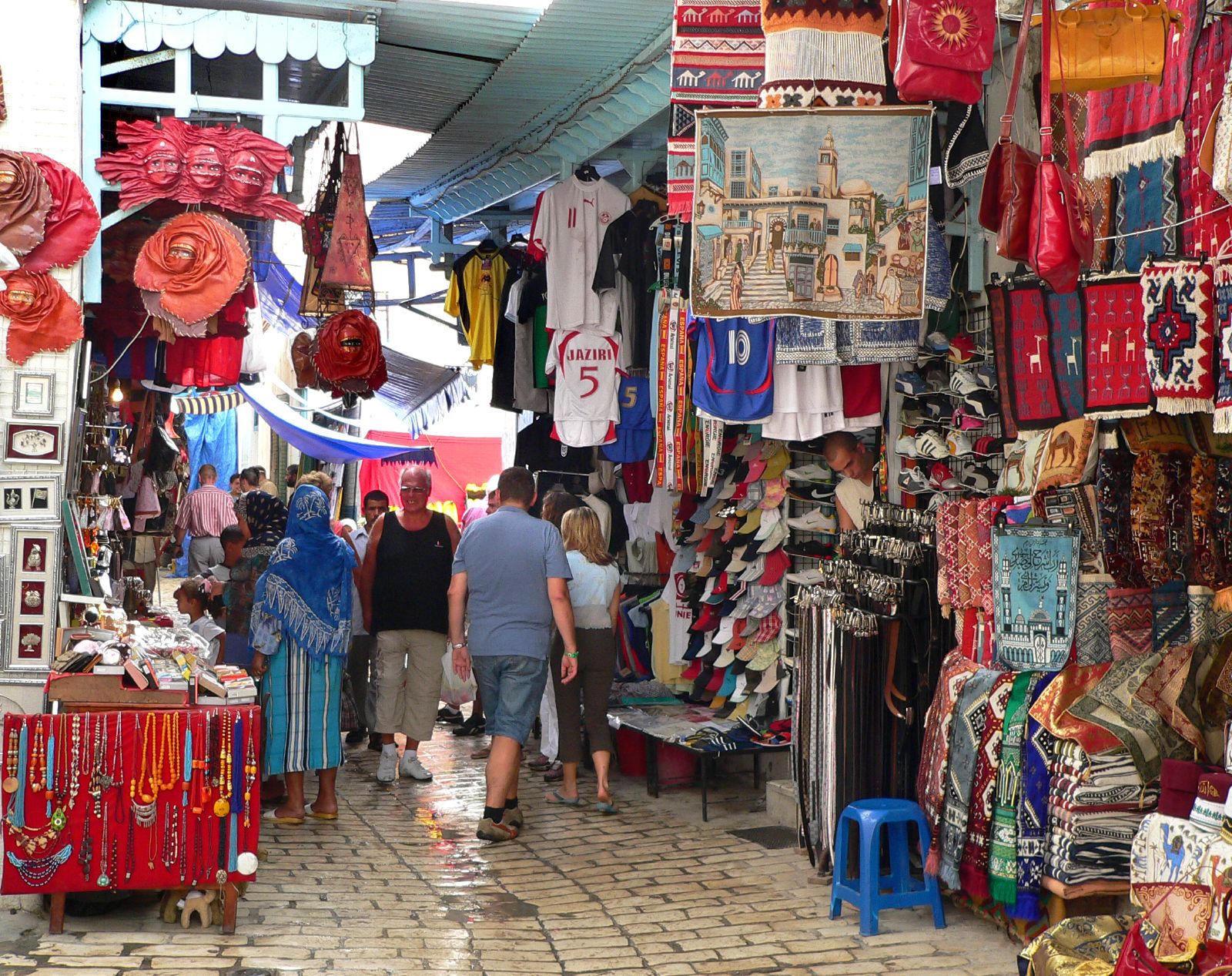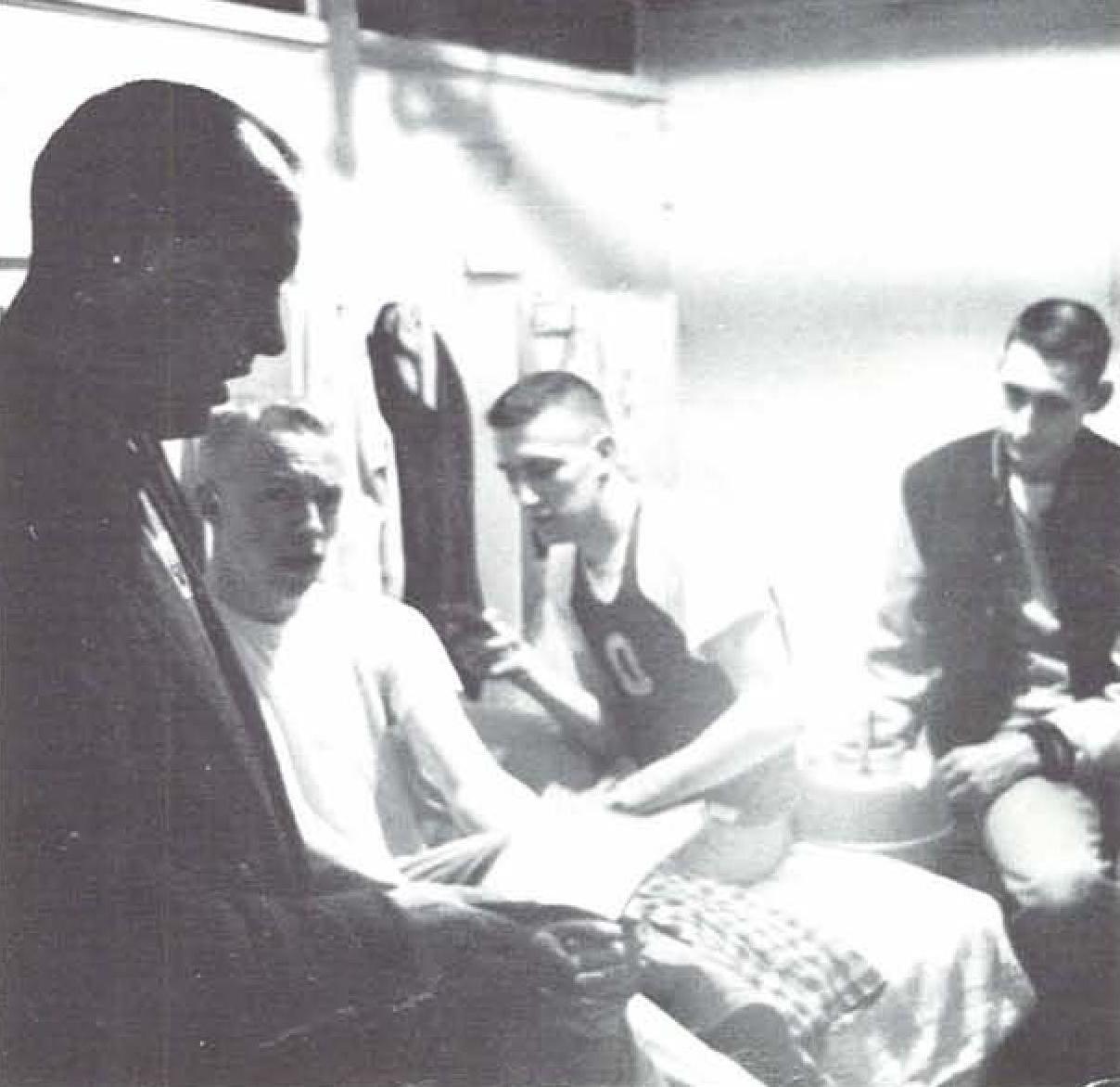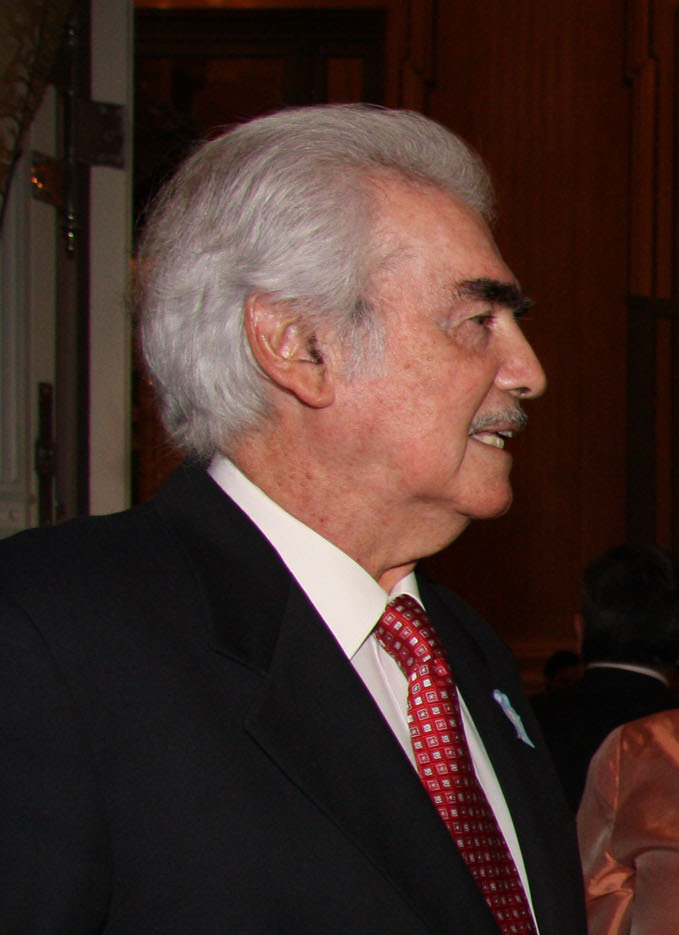|
Abasto De Buenos Aires
The Abasto Shopping is one of the biggest shopping mall centers in Buenos Aires, Argentina. The building was the central wholesale fruit and vegetable market in the city ("Mercado de Abasto") from 1893 to 1984. Since 1999, it has served as a shopping mall. It is also famous for being in the area where the tango singer Carlos Gardel, known as ''El Morocho del Abasto'' ("the dark-haired guy from Abasto"), lived for most of his life. Today, the surrounding area, though part of the Balvanera barrios of Buenos Aires, neighbourhood, is sometimes referred to as ''Abasto''. The Abasto Shopping centre is served by the adjoining underground station Carlos Gardel of Line B (Buenos Aires), line B metro (subte). History By the end of the 19th century, the city of Buenos Aires was expanding rapidly due to the influx of migrants from various European countries. Because of the demographic change, and the demolition of the ''Mercado Modelo'' market near the Plaza de los Dos Congresos, Plaza Lore ... [...More Info...] [...Related Items...] OR: [Wikipedia] [Google] [Baidu] |
Buenos Aires
Buenos Aires, controlled by the government of the Autonomous City of Buenos Aires, is the Capital city, capital and largest city of Argentina. It is located on the southwest of the Río de la Plata. Buenos Aires is classified as an Alpha− global city, according to the Globalization and World Cities Research Network, GaWC 2024 ranking. The city proper has a population of 3.1 million and its urban area 16.7 million, making it the List of metropolitan areas, twentieth largest metropolitan area in the world. It is known for its preserved eclecticism, eclectic European #Architecture, architecture and rich culture, cultural life. It is a multiculturalism, multicultural city that is home to multiple ethnic and religious groups, contributing to its culture as well as to the dialect spoken in the city and in some other parts of the country. This is because since the 19th century, the city, and the country in general, has been a major recipient of millions of Immigration to Argentina, im ... [...More Info...] [...Related Items...] OR: [Wikipedia] [Google] [Baidu] |
Olivos, Buenos Aires
Olivos is a neighborhood in Vicente López Partido, Buenos Aires Province, Argentina. It is bordered to the south by Vicente López neighborhood and Florida; to the east by the River Plate; to the north by La Lucila and Martínez, and to the west by Munro. Olivos is the municipal seat of Vicente López Partido, and it is also seat of the Argentina presidencial residence. History A well-known stop along the Buenos Aires- Córdoba trade route for much of the 18th century, one of the area's first landowners, Domingo de Acassuso, began cultivating olive trees around 1720 and the spot was officially named ''Olivos'' ("Olive Trees") on 19 February 1770. Much of the area was later purchased by Viceroy Antonio de Olaguer y Feliú and by a German immigrant, Hernán Wineberg, who sold a large tract in 1860 for the construction of the Ferrocarril Central Argentino through the area. The 1863 inaugural of the local railway station, one of Argentina's first, began attracting homeow ... [...More Info...] [...Related Items...] OR: [Wikipedia] [Google] [Baidu] |
Shopping Malls In Buenos Aires
Shopping is an activity in which a customer browses the available goods or services presented by one or more retailers with the potential intent to purchase a suitable selection of them. A typology of shopper types has been developed by scholars which identifies one group of shoppers as recreational shoppers, that is, those who enjoy shopping and view it as a leisure activity.Jones, C. and Spang, R., "Sans Culottes, Sans Café, Sans Tabac: Shifting Realms of Luxury and Necessity in Eighteenth-Century France," Chapter 2 in ''Consumers and Luxury: Consumer Culture in Europe, 1650-1850'' Berg, M. and Clifford, H., Manchester University Press, 1999; Berg, M., "New Commodities, Luxuries and Their Consumers in Nineteenth-Century England," Chapter 3 in ''Consumers and Luxury: Consumer Culture in Europe, 1650-1850'' Berg, M. and Clifford, H., Manchester University Press, 1999 Online shopping has become a major disruptor in the retail industry as consumers can now search for product ... [...More Info...] [...Related Items...] OR: [Wikipedia] [Google] [Baidu] |
Nike, Inc
Nike, Inc. (stylized as ''NIKE'') is an American athletic footwear and apparel corporation headquartered near Beaverton, Oregon. It is the world's largest supplier of Sneakers, athletic shoes and apparel and a major manufacturer of sports equipment, with revenue in excess of US$46 billion in its fiscal year 2022. The company was founded on January 25, 1964, as "Blue Ribbon Sports", by Bill Bowerman and Phil Knight, and officially became Nike, Inc. on May 30, 1971. The company takes its name from Nike (mythology), Nike, the Greek goddess of victory. Nike markets its products under its own brand, as well as Nike Golf, Nike Pro, Nike+, Nike Blazers, Air Force 1 (shoe), Air Force 1, Nike Dunk, Air Max, Foamposite, Nike Skateboarding and Nike CR7. The company also sells products under its Air Jordan brand and its Converse (brand), Converse subsidiary. Nike also owned Bauer Hockey from 1995 to 2008, and previously owned Cole Haan, Umbro, and Hurley International. In addition to manu ... [...More Info...] [...Related Items...] OR: [Wikipedia] [Google] [Baidu] |
Lacoste
Lacoste S.A. (; ) is a French designer sports fashion company, founded in 1933 by tennis player René Lacoste, and entrepreneur André Gillier. It sells clothing, footwear, sportswear, eyewear, leather goods, perfume, towels and watches. The company can be recognised by its green Crocodile logo. René Lacoste, the company's founder, was first given the nickname "the Crocodile" by the American press after he bet his team captain a crocodile-skin suitcase that he would win his match. He was later redubbed "the Crocodile" by French fans because of his tenacity on the tennis court. In November 2012, Lacoste was bought outright by Swiss family held group Maus Frères. History René Lacoste founded ''La Chemise Lacoste'' in 1933 with André Gillier, the owner and president of the largest French knitwear manufacturing firm at the time. They began to produce the revolutionary tennis shirt Lacoste had designed and worn on the tennis courts with the crocodile logo embroidered on the ... [...More Info...] [...Related Items...] OR: [Wikipedia] [Google] [Baidu] |
Adidas
Adidas AG (; stylized in all lowercase since 1949) is a German athletic apparel and footwear corporation headquartered in Herzogenaurach, Bavaria, Germany. It is the largest sportswear manufacturer in Europe, and the second largest in the world, after Nike. It is the holding company for the Adidas Group, which also owns an 8.33% stake of the football club Bayern Munich, and Runtastic, an Austrian fitness technology company. Adidas's revenue for 2024 was listed at €23 billion. The company was started by Adolf Dassler in his mother's house. He was joined by his elder brother Rudolf in 1924 under the name ''Gebrüder Dassler Schuhfabrik'' ("Dassler Brothers Shoe Factory"). Dassler assisted in the development of spiked running shoes ( spikes) for multiple athletic events. To enhance the quality of spiked athletic footwear, he transitioned from a previous model of heavy metal spikes to utilising canvas and rubber. Dassler persuaded U.S. sprinter Jesse Owens to use his ha ... [...More Info...] [...Related Items...] OR: [Wikipedia] [Google] [Baidu] |
Viktor Sulčič
Viktor Sulčič (1895 - 1973), also known as Víctor (or Victorio) Sulcic, was a Slovenian born Art Deco architect in Argentina. He was born in 1895 in Križ (in Italian ''Santa Croce'') near Trieste. He completing his studies of architecture in Florence and Bologna. Sulčič emigrated to Argentina in 1924. He joined two other architects there: José Luis Delpini and Raúl Bes. The two most famous buildings designed by the trio, are located in Buenos Aires: the Abasto market, completed in 1934, and Boca Juniors stadium La Bombonera, completed in 1940. Other works by Viktor Sulcic include a collection of water colours depicting South American landscapes and poems written in Spanish. He died in 1973 in Buenos Aires. Viktor Sulcic was married to Anna Kiselicki, a piano teacher, native of Vranjevo near Novi Bečej in Serbia , image_flag = Flag of Serbia.svg , national_motto = , image_coat = Coat of arms of Serbia.svg , national_anthem ... [...More Info...] [...Related Items...] OR: [Wikipedia] [Google] [Baidu] |
Mercado De Abasto (1925)
The Abasto Shopping is one of the biggest shopping mall centers in Buenos Aires, Argentina. The building was the central wholesale fruit and vegetable market in the city ("Mercado de Abasto") from 1893 to 1984. Since 1999, it has served as a shopping mall. It is also famous for being in the area where the tango singer Carlos Gardel, known as ''El Morocho del Abasto'' ("the dark-haired guy from Abasto"), lived for most of his life. Today, the surrounding area, though part of the Balvanera neighbourhood, is sometimes referred to as ''Abasto''. The Abasto Shopping centre is served by the adjoining underground station Carlos Gardel of line B metro (subte). History By the end of the 19th century, the city of Buenos Aires was expanding rapidly due to the influx of migrants from various European countries. Because of the demographic change, and the demolition of the ''Mercado Modelo'' market near the Plaza Lorea, the Devoto brothers on August 16, 1888, proposed the construction of a ... [...More Info...] [...Related Items...] OR: [Wikipedia] [Google] [Baidu] |
Francisco Seeber
Francisco Seeber (November 15, 1841 – December 13, 1913) was an Argentine military officer, businessman and Mayor of Buenos Aires. Life and times Francisco Seeber was born in Buenos Aires to Sophia Taut and Magnus Seeber, both German Argentine immigrants. He completed his studies in Hamburg, Germany, and returned in 1859. He joined the Argentine Army, and fought in the Battle of Cepeda (1859) and as a Captain in the Paraguayan War in 1865 and 1866. Upon his return, he joined the editorial board of ''La Libertad'', and was elected to the Buenos Aires Province Legislature. He married Fanny Agrelo in 1868, and they had nine children. Seeber established a construction firm, Catalinas Warehouses and Pier Company, Ltd., in 1872.Cutolo, Vicente. ''Nuevo Diccionario Biográfico Argentino''. Buenos Aires: Editorial Elche, 1968. The firm obtained a municipal contract to construct the Catalina Docks (located along what later became the Catalinas Norte office park). Needing a large a ... [...More Info...] [...Related Items...] OR: [Wikipedia] [Google] [Baidu] |
List Of Mayors And Chiefs Of Government Of Buenos Aires
This is a list of mayors and chiefs of government of the city of Buenos Aires, Argentina's capital, since its federalization. Its first Mayor (, Intendant) was Torcuato de Alvear, who was appointed by President Julio Argentino Roca following the city's federalization. For the next 110 years, the intendant was directly appointed by the president, meaning that Buenos Aires had less autonomy than the smallest municipality. Following the 1994 amendment of the Argentine Constitution, the city gained autonomous status. The title of the city's chief executive was changed to Chief of Government ('), who was directly elected by universal suffrage. He was assisted by a Vice-Chief of Government ('), elected on the same ticket. However, in popular usage, especially outside of Argentina, the chief and vice-chief are often called mayor and vice-mayor, respectively. The chief and vice chief are elected on a single ticket for a term of four years, with possibility of reelection. The f ... [...More Info...] [...Related Items...] OR: [Wikipedia] [Google] [Baidu] |
Mercado Abasto Verduras 1898
Mercado is the Portuguese and Spanish word for ''market''. It may refer to: Public markets * Mercado de las Carnes, a former meat market in Ponce, Puerto Rico * Mercado Central, Valencia, a public market in Valencia, Spain * Mercado Central de Santiago, the central market of Santiago de Chile * Mercado Jamaica, Mexico City, a traditional market in Mexico City * Mercado Modelo (Montevideo), a central fruit and vegetable wholesale market in Montevideo * Mercado de Sonora, a traditional market in Mexico City People with the surname * Gabriel Mercado, Argentine footballer * Jennylyn Mercado (born 1987), Filipino actress * Jerges Mercado Suárez, Bolivian politician * Joseph Mercado, Filipino academic * Juan Miguel Mercado, Spanish cyclist * Luis Edgardo Mercado Jarrín, Peruvian politician * Mai Mercado (born 1980), Danish politician * Melinda Mercado, American soccer player * Michael Mercado (born 1999), American baseball player * Noel Kempff Mercado, Bolivian biologist * Oscar ... [...More Info...] [...Related Items...] OR: [Wikipedia] [Google] [Baidu] |





